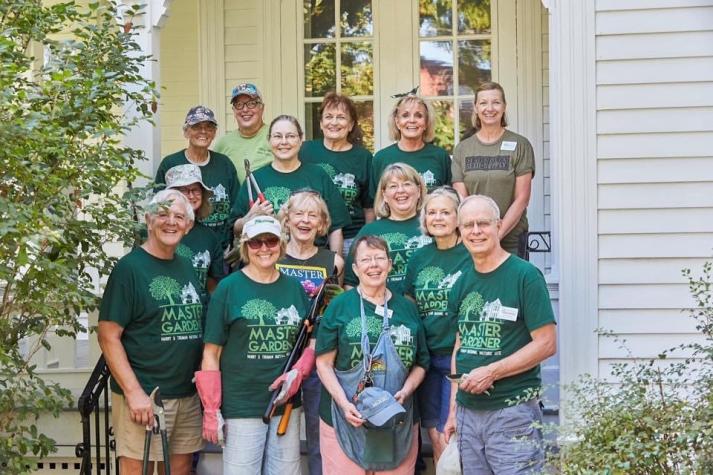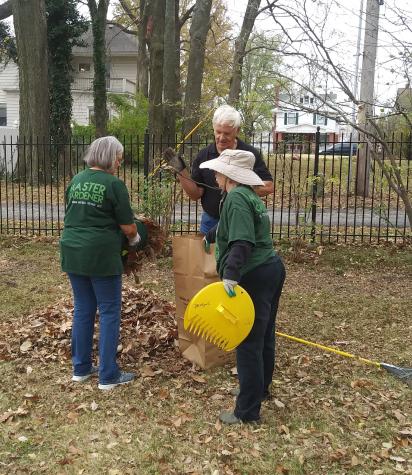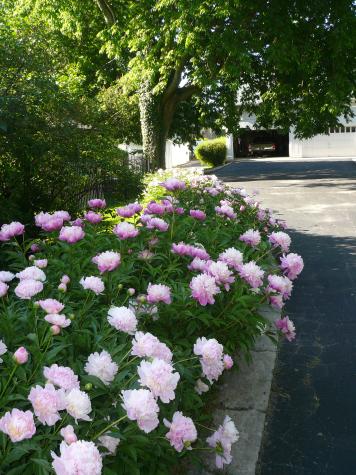INDEPENDENCE, Mo. – It’s only fitting that the peonies at the President Harry S Truman National Historic Site in Independence should be in full bud on his May 8 birthday.
Peonies still line fragrant walkways to the carriage house at the home of the 33rd president of the United States, just as they did when Harry and Bess Truman lived there.
University of Missouri Extension Master Gardeners of Greater Kansas City partner with the National Park Service to ensure that the landscaping at the site remains “frozen in time,” says MU Extension urban horticulturist Tamra Reall. The partnership began in 2009.
The Trumans bequeathed their home and artifacts to the park service with the stipulation that they be preserved just as they were when they lived there from 1953 to 1972.
Reall and MU Extension horticulture instructor Cathy Bylinowski work with area Master Gardeners to achieve this step back in time.
Volunteers maintain the grounds to carry on the Truman family’s Midwestern sense of thrift and desire for privacy. They also maintain the gardens of two homes on the property that belonged to Bess Truman’s brothers and the nearby Noland Home, where Harry stayed when he came in from the farm to visit Bess before their marriage. In all, it is 1.41 acres.
Lynn James, a 20-year member of Master Gardeners of Greater Kansas City, says they maintain the grounds in strict accordance with the National Park Service’s Cultural Landscape Report.
Unlike most presidential homes, the Truman grounds are simple, perhaps unwieldy in some visitor’s eyes, says James. The plan even calls for a certain percentage of weeds in the lawn so that it is historically correct.
But that is part of the character and charm of the grounds, she says. “We love the nostalgia and history associated with this project.”
For gardeners, it’s an honor to work there, James says. For the National Park Service, volunteer Extension Master Gardeners fill a critical need, especially during staff shortages, says Kristen Stalling, the site’s museum curator.
About 30 Master Gardeners log four hours each of service during twice-monthly work sessions from March through November. Their dedication continues even during extreme temperatures, which last year ranged from 38 to 108 degrees on gardening days.
Extension Master Gardeners are glad to share their knowledge while holding true to the integrity of the National Park Service plan, which prohibits new plant varieties at the home, Stalling says. At times, Master Gardeners bring in plants from their own gardens to replace historic ones that died.
“It is wonderful to have them to help manage the cultural landscapes, and the knowledge they bring is unmatched,” she says.
Spirea, mock orange, hibiscus, forsythia and quince shielded the house from curious onlookers during Truman’s presidency, and they remain today. The home is open to the public at no cost Wednesday to Sunday, except for holidays.
Among the seasonal favorites at the home are peonies, the traditional flower for Memorial Day. In the 1800s, when the holiday was called Decoration Day, peonies were one of the few flowers in bloom in late May and were widely used to adorn the graves of fallen soldiers, according to MU Extension horticulturist David Trinklein. Peonies likely reminded Truman of life on the farm and his military service on the front lines of World War I, he said.
Bess, too, loved her Missouri flowers. In addition to peonies, the grounds bloom with her other favorite perennials – iris, roses, lily of the valley and wild violets.
Today, two flowers still bear the Truman name.
Hybridizers Van der Valk/van der Zwet named a double pink peony in honor of the Trumans’ only child, Margaret, in 1953. The peony remains available for sale today through many vendors.
In 1962, famed second-generation orchid grower John Lines presented a special orchid hybrid in the first lady’s honor, the Cattleya Bess Truman, at the Fourth Mid-America Orchid Congress in Kansas City. Orchid corsages were frequently part of her ensemble at formal events. (See First Ladies and their Cattleyas: Bess Truman.)
Today, Master Gardeners share the family’s love of flowers with visitors from all over the world who come to see where Missouri’s favorite son lived. James says she has heard that Truman’s grandson still visits the home on occasion. She hopes he feels pride in the work done by Master Gardeners to preserve his grandparents’ home. “I hope he feels like ‘you can go home again,’” says James.
More than 26,000 people visit the Truman Home and grounds annually.
Master Gardeners do not receive pay for their services, but the Truman Home staff honors them at special events. Perks at the Truman Home in recent years have allowed the volunteers to tour the Truman archives, the “big house” and World War I Museum, and the Eisenhower Presidential Library.
Learn more or to take a virtual tour.
View a StoryCorps video on the Master Gardeners’ service at the Truman Home.
Related stories
Missouri Master Gardeners volunteer to teach others their passion
Peony: A Memorial Day tradition
Photos
Volunteer Extension Master Gardeners.
Volunteer Extension Master Gardeners at the Harry S Truman National Historic Site. Photo courtesy of Master Gardeners of Greater Kansas City.
Volunteers raking leaves.
Volunteer Extension Master Gardeners at the Harry S Truman National Historic Site. Photo courtesy of Master Gardeners of Greater Kansas City.
Peonies.
Peonies at the Harry S Truman National Historic Site. National Park Service photo.
Peonies.
Peonies at the Harry S Truman National Historic Site. National Park Service photo.



